- Home
- Maurice Magre
Melusine
Melusine Read online
Melusine
by
Maurice Magre
Translated, annotated and introduced by
Brian Stableford
A Black Coat Press Book
TABLE OF CONTENTS
Introduction 4
MELUSINE; OR, THE SECRET OF SOLITUDE 12
THE DARK SIDE OF SOULS 209
THE REVELATION OF INVISIBLE WORLDS 245
FRENCH SCIENCE FICTION & FANTASY COLLECTION 280
BY THE SAME AUTHOR 288
Introduction
This is the eleventh volume of a twelve-volume set of translations of Maurice Magre’s prose fiction. It contains translations of the novel Mélusine, ou le Secret de la solitude (1941) and the collections of vignettes “Le Côté d’ombre des âmes” and “Révélation des mondes invisibles” from La Beauté invisible, as “The Dark Side of Souls” and “The Revelation of Invisible Worlds.”
Volume One, The Marvelous Story of Claire d’Amour and Other Stories, contains translations of early short stories, including the collection Histoire merveilleuse de Claire d’Amour suivie d’autres contes merveilleux (1903) and six other stories from various sources published between 1901 and 1913.
Volume Two, The Call of the Beast and Other Stories, contains translations of his first three works of prose fiction in volume form, Les Colombes poignardées (1917), as “Stabbed Doves,” La Tendre camarade (1918), as “The Tender Comrade” and L’Appel de la bête (1920), as “The Call of the Beast.”
Volume Three, Priscilla of Alexandria and Other Stories contains translations of the original version of the story collection Vies des courtisanes, first published in Oeuvres Libres 23 (1923), as “Courtesans’ Lives” plus the additional story added to the version published in volume form in 1925, and the novel Priscilla d’Alexandrie (1925), as “Priscilla of Alexandria.”
Volume Four, The Angel of Lust, contains translations of the novella, La Vie amoureuse de Messaline (1925), as “The Love Life of Messalina,” the novel published as La Luxure de Grenade (1926), as “The Angel of Lust,” and the chapter from Magiciens et illuminés (1930) entitled “Christian Rosenkreutz et les Rose-croix,” as “Christian Rosenkreutz and the Rosicrucians.”
Volume Five, The Mystery of the Tiger, contains translations of the novella Le Roman de Confucius (1927), as “The Story of Confucius,” and the novel Le Mystère du tigre (1927), as “The Mystery of the Tiger.”
Volume Six, The Poison of Goa, contains translations of the novel Le Poison de Goa (1928), as “The Poison of Goa,” and the prose poems contained in Le Livre des lotus entr’ouverts (1926), as “Lotus Blossoms.”
Volume Seven, Lucifer, contains a translation of the novel originally published under the same title in 1929 and the novella La Nuit de haschich et de l’opium (1929), as “The Night of Hashish and Opium.”
Volume Eight, The Blood of Toulouse, contains translations of the novel Le Sang de Toulouse (1931), as “The Blood of Toulouse,” and the chapter from Magiciens et illuminés entitled “Le Maître inconnu des Albigeois,” as “The Secret Master of the Albigensians.”
Volume Nine, The Albigensian Treasure, contains translations of the novel Le Trésor des Albigeois (1938) as “The Albigensian Treasure,” and the collection of vignettes “Communication avec la nature” from La Beauté invisible (1937), as “Communication with Nature.”
Volume Ten, Jean de Fodoas, contains translations of the novel Jean de Fodoas: aventures d’un Français à la cour de l’empereur Akbar (1939) as “Jean de Fodoas” and the chapter from Magiciens et illuminés entitled “Le Mystère des Templiers,” as “The Mystery of the Templars.”
Volume Twelve, The Brothers of the Virgin Gold, contains a translation of the novel Les Frères de l’or vierge, first published posthumously in 1949.
Mélusine ou le secret de la solitude has a similar narrative structure to Le Trésor des Albigeois, its brief chapters mingling a number of mini-essays and prose-poems with a continuing first-person narrative that, although clearly fictitious and exceedingly rich in the fantastic, is proffered by an unnamed protagonist who is clearly an alter ego of the author.
The three-year gap in publication of the two novels—if they can really be considered as novels—probably does reflect a three-year gap in their writing, but if, as seems possible, both took aboard separately-written pieces when they were patched together, the composition of their elements might have overlapped, and also overlapped that of La Beauté invisible, whose component vignettes have much in common with the vignettes included in the novels.
In the biography Maurice Magre: Le Lotus perdu [Maurice Magre: The Lost Lotus] (1999), Jean-Jacques Bedu, having seen a manuscript entitled “Roseline ou la Tentation du crépuscule” [Roseline; or, The Temptation of the Dusk] bearing the date 6 April 1941, states unequivocally that Magre wrote Mélusine, “one of his last masterpieces,” after the German occupation of Paris, while he was occupying a room in a rest home in Nice, but he gives no further details regarding the precise contents of the manuscript that he saw. Whenever their various component parts were composed, however, in terms of their narrative strategy, La Beauté invisible, Le Trésor des Albigeois and Mélusine can be seen as a quirky trilogy of sorts, dealing with the same themes and experimenting with a similar literary method—or re-experimenting with it, as Magre had used something similar earlier in his career in Les Colombes poignardées and La Tendre camarade.
Given that Magre certainly brought the novel to a conclusion on 6 April 1941, and presumably delivered it to the printer then—the publication date is given in the text, printed in Avignon, as 21 November, twenty days before Magre died, on 11 December 1941—it may seem ridiculous to raise the question of whether the book is actually finished, but it might be worth pointing out that at least one plot-thread introduced in the early chapters and subjected to some slight further development is abandoned without any hint of resolution. It is, however, not impossible that Magre’s decision to consider the text finished was an abandonment rather than a completion, determined by the belief that he would not have time to bring it to a more rounded conclusion, either because he expected to die before December or because there was other work to which he wanted to give priority.
If work on Mélusine was, in fact, cut short, the latter of those alternatives might be the more probable, as there were two larger projects on which he might have been still working, perhaps hoping to finish at least one of them before he died. One was the massive patchwork Les Frères de l’or vierge, of which a version was published posthumously in 1949, although its principal narrative thread was clearly incomplete, having been provided with a curt termination incompatible with its early chapters, possibly supplied by an editor, although it is more likely that Magre applied the patch when he decided that he could go no further. The other was his final non-fiction book, Le Livre des visions divines [The Book of Divine Visions], similarly published posthumously, in 1943, and probably also less full than the writer would have liked—Bedu judges it inferior to its two predecessors, Les interventions supernaturelles [Supernatural Interventions] (1939) and Le Livre des certitudes admirables [The Book of Admirable Certainties] (1940).
It is also possible, of course, that Magre was too sick to do any more work after deciding that Mélusine was finished, and that both of the posthumously-published projects were already as complete as they would ever be in April 1941. If so, then Mélusine might have been his swan song, and its delicate imaginative flourishes the last gasps of his prolific and fecund imagination. In spite of the problems of their internal chronology, the revision of the classic legend of Mélusine of Lusignan contained in the story, and its overlapping with the invented legend of Saint Eleutherius and Roseline’s fantasies, is ingenious. The visionary sequences depicting the protagonist�
��s communications with nature are vividly effective, and demonstrate that Magre’s poetic gifts had not waned—a conclusion also suggested by the last of his nine major collections of poetry, Le Parc des Rossignols [Nightingale Park] (1940).
Seen as an ensemble, Mélusine is poignantly elegiac, providing an entirely apt complement to the vignettes collected in “Révélation des mondes invisibles,” but it also has a strong component of wry humor, especially in its dealings with the desertion and return of the “sublime friends,” which similarly provide a quirky complement to “Le Côté d’ombre des âmes.” Like his previous quasi-autobiographical novel, Lucifer, published more than a decade earlier and similarly associated with a burst of confessional non-fiction, Mélusine is surely reflective, looking back to an earlier phase of the author’s personal quest. Indeed, it finds its narrator not only still questing, but still on the threshold of his final attempt to find peace of mind in solitude, which he had first attempted long before, having left Paris in the late 1920s and having lived in various more-or-less isolated locations since then.
According to Bedu, with support from the final chapters of the two posthumous volumes, Magre “found God” in the last months to his life and sought solace in the orthodox Catholic dogmas that he had long rejected as inadequate and injurious. If so, it was presumably in the spirit of a drowning man caching at a straw, and says less about the hopefulness of the gesture itself than the inadequacy of the conviction of having reached a successful conclusion that he had tried to assert in “Révélations des mondes invisibles” and Le Livre des certitudes admirables. In that regard, Mélusine is perhaps a more honest work than its non-fictional companion-pieces, in its wry acknowledgement that any apparent conclusion to a spiritual quest can only be illusory, because it can only be a forward-looking arrival on the threshold of a new beginning.
In one sense, the narrative terminus at which Mélusine finally arrives has more in common with the first of the author’s three quasi-autobiographical contemporary novels, L’Appel de la bête, than with its more immediate predecessor Lucifer. Whereas Lucifer picks up from the initial phase of earlier novel the notion that the Magre’s earlier erotic obsessions could be seen as a kind of demonic possession, and develops that idea into a graphic horror story, the final chapter of Mélusine is more closely related to the final chapter of L’Appel de la bête, in which the protagonist appears to have freed himself from that possession and is ready to face life without it, equipped with a new maturity. In its tone and attitude, however, Mélusine is strikingly different from both of the earlier novels, whose hauntings are far more intense and oppressive, and it represents a translocation to a contemporary setting and an intriguing further development of the dry laconism of Le Trésor des Albigeois.
Far less melodramatic than Le Trésor des Albigeois, which mingles its quiet fabular chapters with a plague, a black mass and an excommunication—all supernaturally effective—Mélusine is able to concentrate almost entirely on the sense of wonder communicated by its supernatural intrusions rather than any sense of threat. Although Roseline, like Laurence in Lucifer and Rose-Thé in L’Appel de la bête, can certainly be seen as yet another incarnation of Claire d’Amour, Magre’s first incarnation of the essentially-treacherous allure of lust, she is treated with a nostalgic indulgence that takes much of the venom out of her bite; although, like her famous ancestor, she has covert serpentine qualities, that is as much a source of legendary glamor as threat, and her fantasies have an esthetic quality that goes beyond, and is arguably more rewarding than, her sex-appeal.
If Mélusine is construed as an allegorical transfiguration of a personal predicament, therefore, in the same self-exploratory vein as “Histoire merveilleuse de Claire d’Amour,” L’Appel de la Bête, Lucifer and Le Trésor des Albigeois, it seems to represent and embody a significant shift in attitude. It is not a conclusion to that literary quest, and could not have constituted a conclusion even if the author had manage to finish it in a more rounded manner than he did, but it certainly represents progress of a sort, and perhaps the only sort that is really possible in that kind of quest, in spite of the greater pretentions and higher ambitions to which “Révélation des mondes invisibles” aspires. Although it is not without a few structural flaws, therefore, Bedu is certainly not wrong to reckon Mélusine as one of the author’s masterpieces.
Bedu was able to ascertain that Magre did not die alone; his ex-wife, who was still living in the south of France, was with him at the end. Bedu concludes from that circumstance that, whatever had caused the break-up of their marriage twenty years before, Jeanne Rosen still loved him. She must, at least, have felt sorry for him, and wanted to offer him what consolation she could. As Bedu conscientiously observes, however, she might have been wiser already to have been thousands of miles away in her native America. In fact, she stayed in Vichy France until she was rounded up by the Gestapo in 1943, for the crime of having Jewish ancestry, and she was deported, dying not long thereafter in a German concentration camp.
There is, alas, no encouragement in that narrative conclusion for any reader who would like to believe that there really is a solution to the existential problem of désespoir that Magre had spelled out in the preface to La Beauté invisible, or that one really ought to be glad to suffer from that kind of despair, provided that one can live with it. But Magre’s career, and literary achievements, do suggest that writing fantastic fiction can help, in some measure, and perhaps reading it can, too.
The translation of Mélusine ou le Secret de la solitude was made from a copy of the 1941 published in Avignon by Édouard Aubanel. The translations of “Le Côté d’ombre des âmes” and “Révélation des mondes invisibles” were made from a copy of the 1937 Fasquelle edition of La Beauté invisible.
Brian Stableford
MELUSINE; OR, THE SECRET OF SOLITUDE
THE GREAT BOOK OF GOD
It was written...
When they look back on life, many people say: “It was written!” But written where? No one knows exactly, for men are ignorant. But I have ended up knowing that all things are written in the great book of God.
That is a great prodigious book with letters of all colors and illuminations on every page. The binding is in orichalcum with a golden lock whose key is magical. For God utilizes magic, white magic and black magic, and also a certain magic blue in color, which is occupied neither with good nor evil but is only concerned with the subtle essence with which souls are created.
As for the characters of the text, perhaps they do not correspond to any human language. They are simultaneously akin to Hebrew and Sanskrit, and might well have been Devangari, the language that the beings called Devas once spoke, who were half-human and half-divine.
It is impossible to say on what occasion it was given to me to cast a rapid glance over the great book of God—oh, very rapid, in truth, and only the page concerning me.
Naturally, I did not understand the text, because of my ignorance of divine things; but I have seen little illustrations that are in the margin, sketches and portraits that seem swiftly designed, with a superior negligence. And at the very top there was my mother’s face, with the tranquil beauty of her immutable love. I did not linger over gazing at the illustrations of my youth, and the subsequent years of my life. Was I wrong? It is a matter of knowing the measure I which remorse is mingled with memory.
Because of the force of the present, I only looked at the designs that dealt with my journey to the mysterious land. And there was an insignificant little house with a cypress standing beside it, like a friend. In spite of the absence of detail, one could see that the door of the house was only pushed to, and that a light phantom was holding it with a transparent hand. In fact, was it a phantom, or the memory of a woman, thus represented?
A little lower down there was a young woman with a pony-tail, a straw hat and the face of a moon, wonderstruck because it was rising in a blue sky. Then a crow, then a tortoise, and then an hourglass. And I noticed tha
t there was an unfinished silhouette of a traveler with a staff, which might become, with a few strokes more, a windmill or a family gathering by the fireside.
Marvelous uncertainty! Similarly, there were blank lines in the text. Certain modifications were possible, then! Thus, it was possible, by a personal decision, to add a pleasant adventure, or remove a cause of chagrin. One could introduce the word reverie or the word happiness. Yes, assuredly, it was possible to modify the great book of God. But only if one had a profound knowledge of Devangari.
THE LETTING AGENT AND DESTINY
It was written that I would go to the most mysterious place on earth.
How did all that happen? Can anyone tell me why I rented the house, took the train, bought a hat of slightly conical form with a Tyrolean plume on the right side, in order to have the external appearance of a traveler? How can one know the enchantment of causes and effects and know whether there is, at the origin, the suggestion of an invisible protective spirit?
Perhaps I was insane to rent a house without seeing it. Perhaps no protective spirit acted, and the first link in the chain of events was in the determination of the letting agent who rented the house. Perhaps that agent had no determination and was simply in a hurry, that morning, to get rid of me.
“A very small house for one person, in a solitary place where there are no factory chimneys, no Sunday fair, nor an inn with a gramophone, nor a blaring casino—that’s difficult to find. Oh, you want a forest all around? That increases the difficulty. And the sea a short distance away? That complicates thing further. You’d prefer a monastery in the vicinity, and bells don’t bother you. Damn! That’s a matter of a very exceptional location. And yet, I can sort you out. I have to hand the very small house you need. It’s exactly suitable. It’s a long time since it’s been let, which is inexplicable, in view of the charm of the location. And by a curious coincidence, everyone’s fighting over it.”

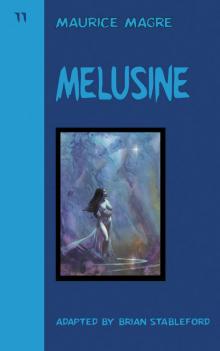 Melusine
Melusine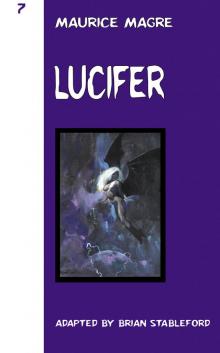 Lucifer
Lucifer Jean de Fodoas
Jean de Fodoas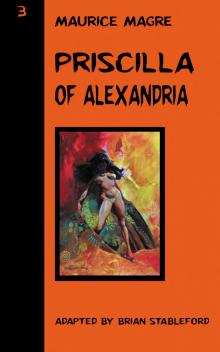 Priscilla of Alexandria
Priscilla of Alexandria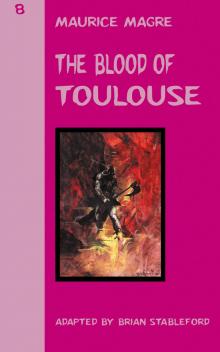 The Blood of Toulouse
The Blood of Toulouse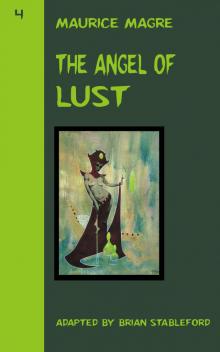 The Angel of Lust
The Angel of Lust